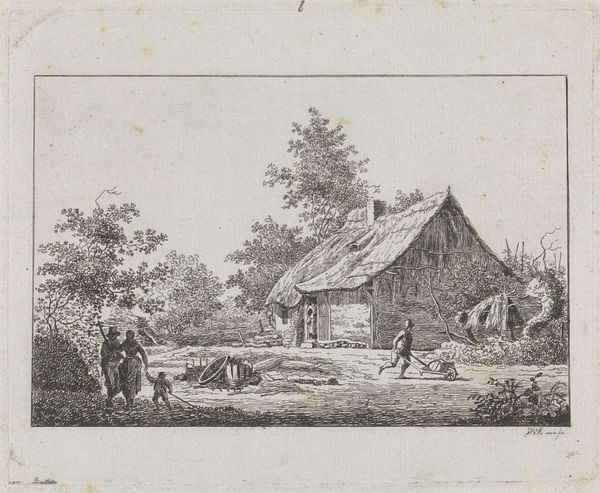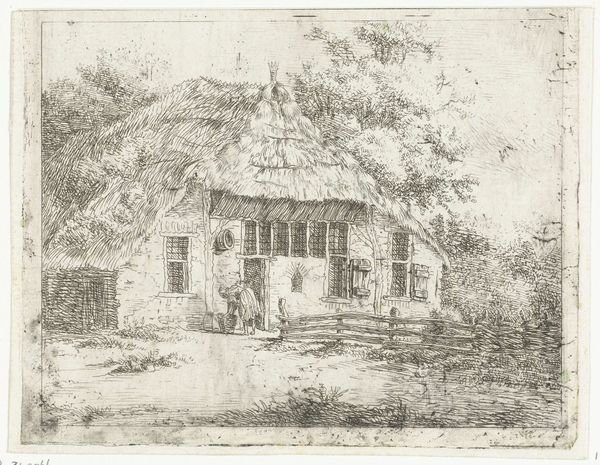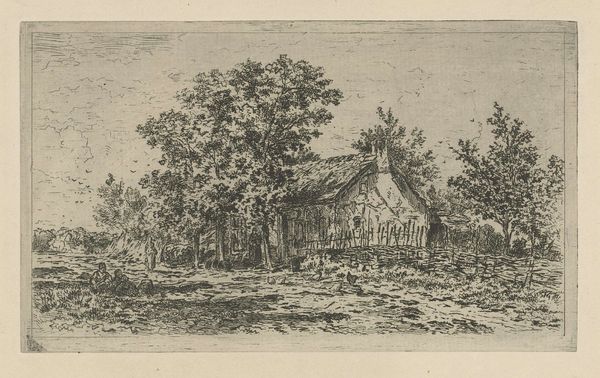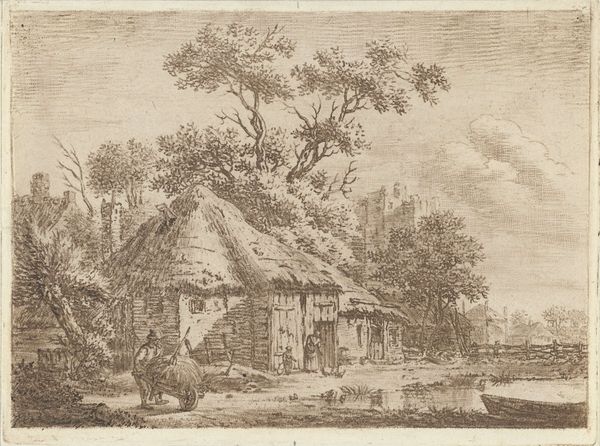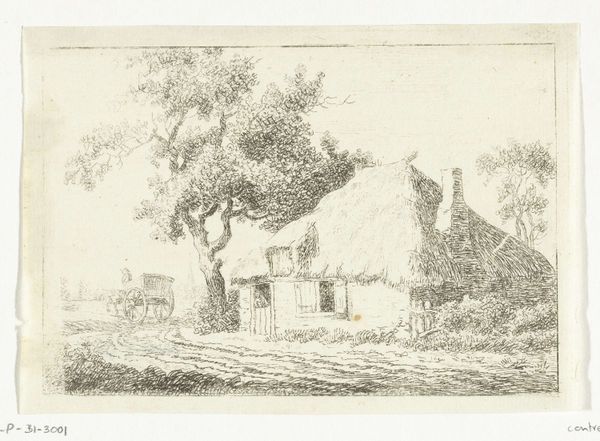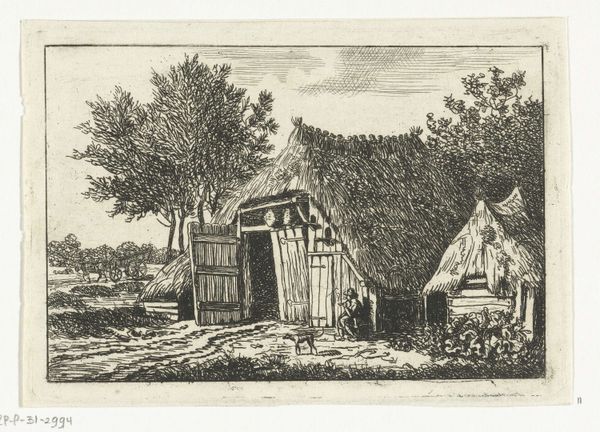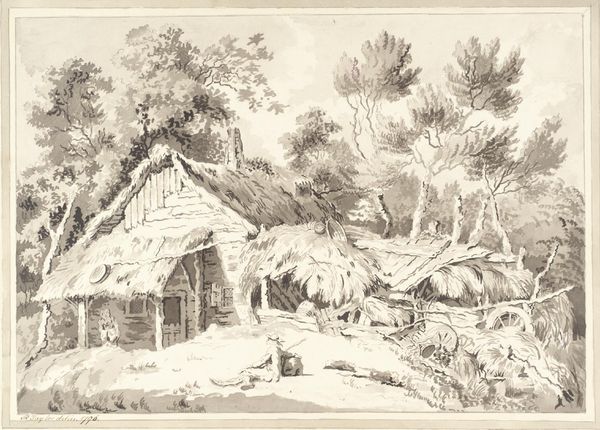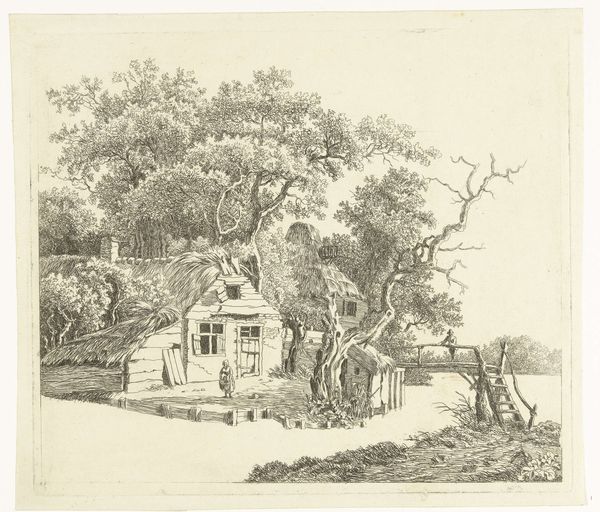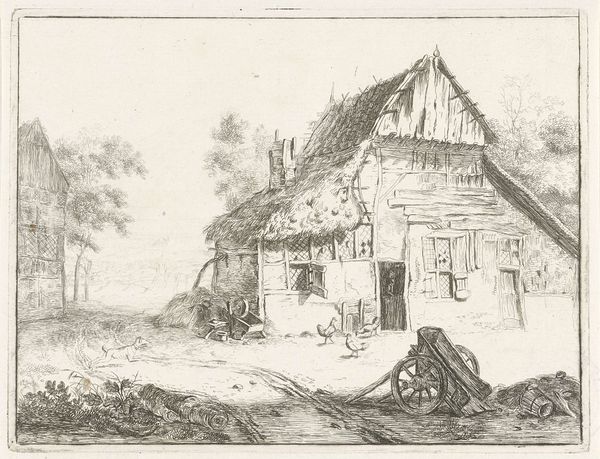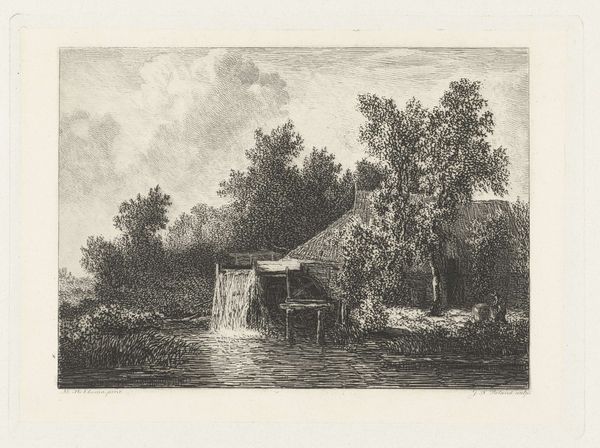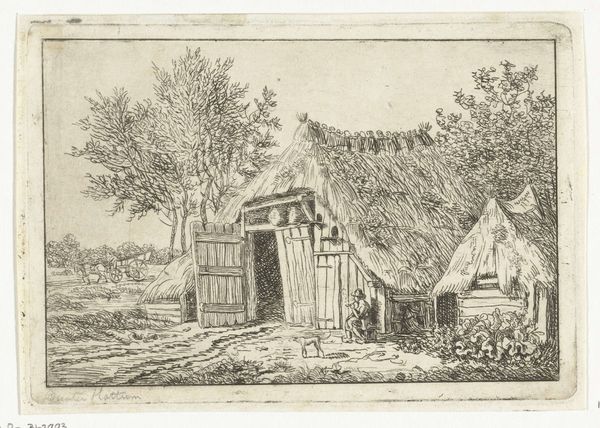
Vrouw met kind staande voor een boerderij op de Amstelveense Weg 1778 - 1838
0:00
0:00
drawing, etching
#
pen and ink
#
drawing
#
dutch-golden-age
#
etching
#
landscape
#
etching
#
genre-painting
Dimensions: height 130 mm, width 165 mm
Copyright: Rijks Museum: Open Domain
Anthonie van den Bos made this print of a woman with child standing in front of a farmhouse on the Amstelveense Weg, sometime in the late 18th or early 19th century. The image offers a glimpse into the rural life of the Netherlands at the time, but it also speaks to the institutional forces that shaped artistic production. The etching technique, with its emphasis on line and detail, was a popular medium for printmaking during this period, allowing artists to create multiple copies of their work for wider distribution. The scene itself reflects the values of the time, with its focus on the family and the idealized image of rural life. The Amstelveense Weg, where the farmhouse is located, was a major thoroughfare connecting Amsterdam with the surrounding countryside, and images like this would have appealed to urban audiences seeking a connection with the land. As historians, we can use resources such as period maps, census records, and agricultural surveys to understand this image better. The meaning of this image is contingent on the social and institutional context in which it was created, and by studying these forces, we can gain a deeper appreciation for the art of the past.
Comments
No comments
Be the first to comment and join the conversation on the ultimate creative platform.
